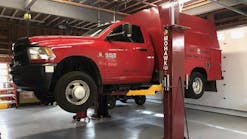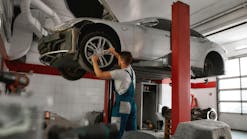Every month, ASA hosts Webinar Wednesdays and this month was no different. ASA had guest presenter Becky Witt, business management and technical training and owner of George Witt Auto Service, on to discuss considerations shop owners must take into account before purchasing shop equipment.
Understanding cost accounting
According to Witt, cost accounting is the science of breaking down steps in a process to see how much each step costs. Shops can do this with a variety of processes such as ordering parts, scheduling appointments, making equipment purchases, etc.
Witt explains the objective is to gain efficiency and reduce costs. This means shop owners should be looking to eliminate steps that add cost, but no value.
In terms of using cost accounting for equipment purchases, Witt provides the example of buying an alignment machine. The cost is around $50,000 and the machine lift is about five years. If you figure in about $2,000 worth of repairs over those five years, as well as two updates to the machine at $950, then the total cost of buying the alignment machine comes out at $53,900.
She then goes through and breaks down what the cost would be per year - $10,780, per week - $207, and per day - $42.
At $42 a day, if your shop is doing one alignment per one at a $112 gross profit, then your gross profit per hour is $64. Witt explains that if your shop’s goal is to be making $160 gross profit per hour from the alignment machine, then you have to be sure you’re getting that kind of work. If you’re not, then you’ll need to reconsider making this purchase and look at subletting your alignment work to another shop. Especially because the above calculations do not factor in any interest on the loan, and interest on a five-year loan could double the cost of the machine, Witt notes.
“[There is] no one right way to run a shop,” Witt says. “Each of us has to find our own. Just because one shop can do something, doesn’t mean another one can.”
Along with crunching the numbers, Witt urges shop owners to take their shops’ layouts into account. Will buying this machine incapacitate a bay? Will it reduce production capacity? Additionally, the most important question a shop owner can ask, Witt says, is ‘Will my technicians use this?’
“Involve your team in equipment purchases. Every shop has equipment that isn’t getting used,” Witt says.
She also recommends that when a salesperson comes to the shop, send them to talk with your technicians. They’re the ones using the equipment. They know what the shop needs best.
Take a look at the reverse
While it’s important to calculate the cost of buying new equipment, it is just as important to look at the cost of not replacing old equipment, Witt states.
Say you have an old A/C machine, Witt says. It still works, but it takes more time to get the job done. The more time it takes that machine to complete a job, the more money your shop is losing while you wait. In the long run, purchasing the new machine will save you money, Witt explains.
As you’re integrating cost accounting into your shops’ daily processes, Witt suggests taking it slow.
“Change one thing,” she says. “Make it work. When that’s done, make more changes.”
To view Witt’s full presentation on Best Practices for Considering ROI on Equipment Purchases, ASA members can view the recording at asashop.org. Additionally, by watching the webinar, viewers are able to earn 2 Ami credits toward an industry-recognized, professional designation and specialty degree. Take the quiz.



